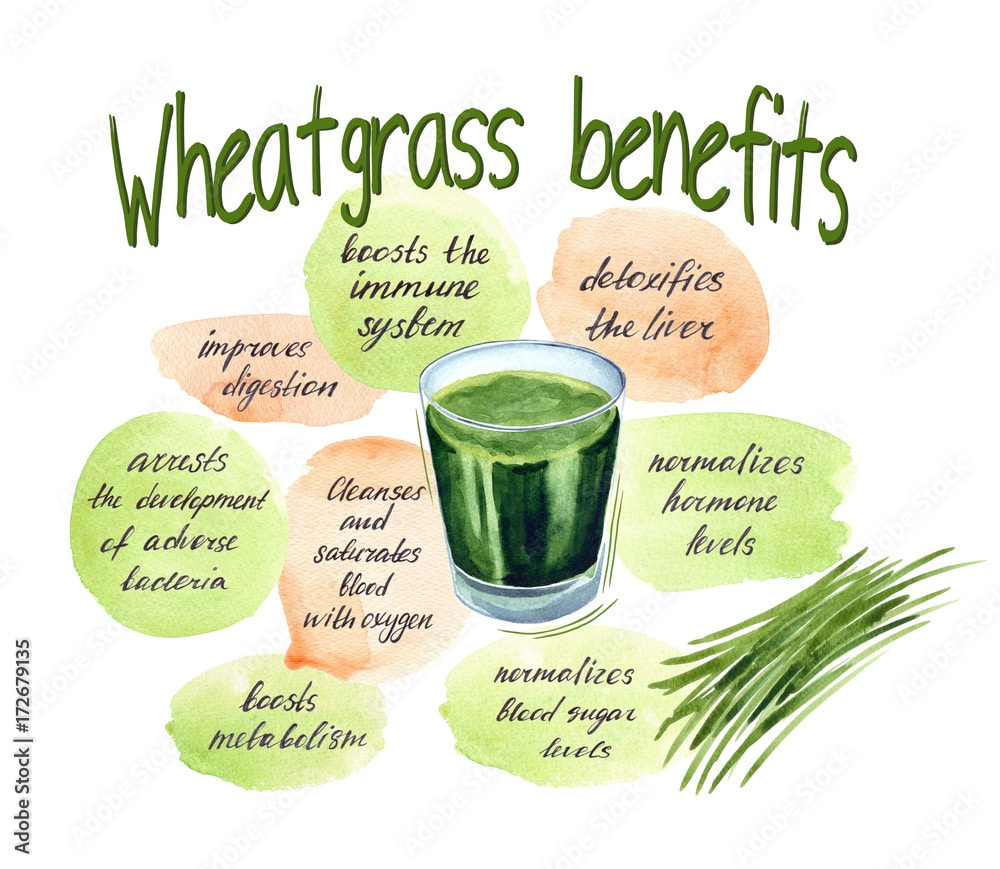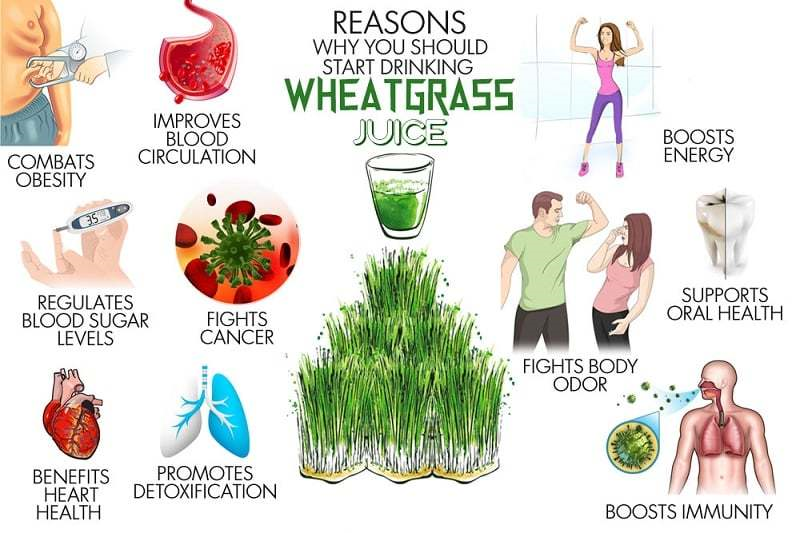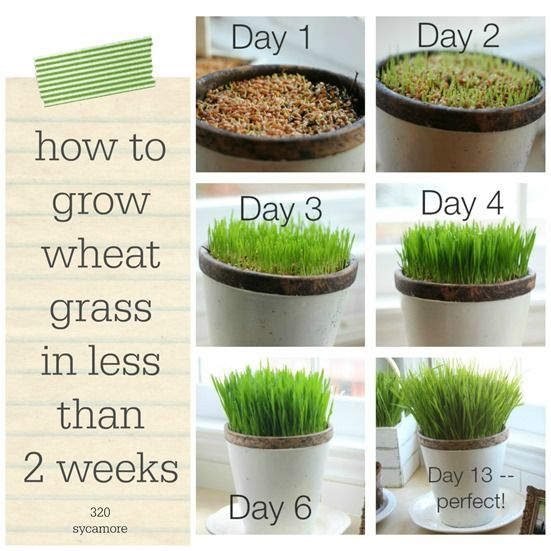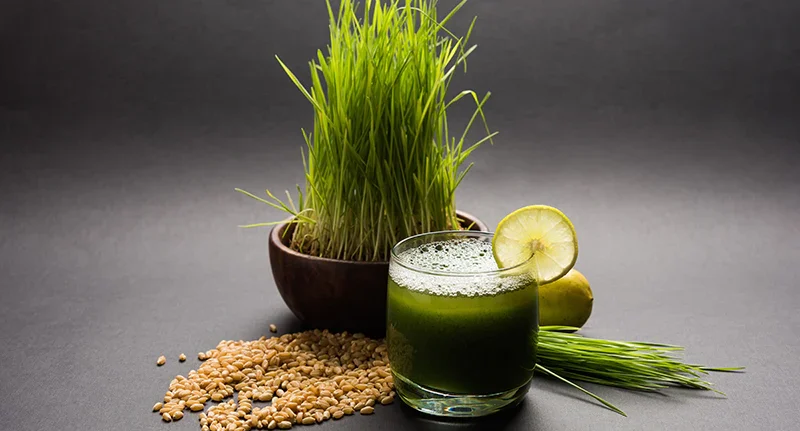Wheat Grass Therapy – Benefits and How to Grow
The wheat grass is a wonder plant. Wheatgrass is low in calories but high in nutrients, including antioxidants such as glutathione, vitamin C, and vitamin E. Antioxidants fight free radicals in the body, reducing oxidative stress and protecting against health conditions like arthritis, cancer, and neurodegenerative diseases.
Chlorophyll
The chief constituent of wheat grass is chlorophyll which nature utilises as a body cleanser, rebuilder and neutraliser of toxins. The chlorophyll molecule bears close resemblance to haemoglobin, the red pigmentation in human blood, and differs only in the central element which in blood is iron and in chlorophyll, magnesium. Because of this it is believed that chlorophyll is the natural blood building element for all plant eaters and humans. It also increases the function of the heart, affects the vascular system, the intestines, the uterus and the lungs. It raises the basic nitrogen exchange and is therefore a tonic which, considering its stimulating properties, cannot be compared with any other.

Wheat Grass Juice Therapy
Wheat grass juice furnishes the body with vital nourishment, providing extra energy to the body. This juice contains nearly 70 percent of chlorophyll. It is a rich source of Vitamins A,B,C and contains minerals like calcium, iron, magnesium, phosphorus, potassium, sodium, sulphur, cobalt, and zinc. The chlorophyll contained in wheat grass juice is very beneficial to the body. It purifies the blood due to its high vitamin and mineral contents. This property is used by the body to cleanse and rebuild itself. By drinking this juice regularly, toxins can be neutralised. It thus helps to maintain good health.
Tooth Disorders
Wheat grass juice acts as an excellent mouth wash for sore throat and pyorrhoea. It also prevents tooth decay and toothache. It is therefore beneficial to chew wheat grass. By drawing out toxins from the gums, it checks bacterial growth.
Skin Diseases
It has been scientifically proved that chlorophyll arrests growth and development of harmful bacteria. Wheat grass therapy can thus be effectively used for skin diseases and ulcerated wounds. By retarding bacterial action, it promotes cell activity and normal regrowth. Regular drinking of wheat grass juice creates an unfavorable environment for bacterial growth. Poultice of wheat grass juice can be applied on the infected area, as it is an able sterilizer.

Circulatory Disorders
The chlorophyll content present in wheat grass enhances heart and lung functions. Capillary activity also increases, while toxemia is reduced. By increasing iron content in the blood and thereby haemoglobin, lung function better. Oxygeneration improves and the effect of carbon-dioxide is minimised. Wheat grass juice is thus highly beneficial in the treatment of circulatory disorders.
Other Diseases
Several other diseases can be treated successfully by regular drinking of wheat grass juice. These include : arthritis, psoriasis, premature greying and falling of hair, general weakness and debility, kidney stones, weak eyesight, abdominal pain, asthma, constipation and insomnia.
The wheat grass chlorophyll is very rapidly assimilated by the body. It can actually save human life when oral feeding is impossible.
How to grow and use wheat grass

Wheat grass can be grown in any sheltered place where the direct rays of the sun do not reach from about 11 a.m to 3 p.m and where the temperature is mild. The direct rays of the sun have a tendency to sap the strength from the grass. The round stalks flatten out and become limp. The chlorophyll seems to lack vigour compared to the chlorophyll extracted from grass protected from the direct rays of the sun.
For growing wheat grass a good variety of wheat should be soaked for eight to 10 hours. The water should then be drained and those grains allowed to sprout for 15 hours. Earthern pots or wooden trays can be used to grow the wheat grass. They should be filled with compost manure and the wheat sprouts should be spared. They should be covered with a dark cloth or kept away from the sunlight in a room. They should be sprinkled with water once or twice a day and allowed to stay as such for six to seven days the grass grows five to seven inches high.
The grass can be cut with a scissor. It should be immediately washed and ground. Thereafter, the juice of the ground pulp should be extracted through a fine piece of cloth. To derive maximum advantage, the pulp should be ground and the juice extracted for two or three times. The juice so extracted should be taken immediately, as its efficacy reduces every minute and the medicinal value is completely lost after three hours.




